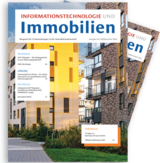Taking the opportunities of the future with virtual reality

“In our workshops with customers I see time and again how hesitant curiosity quickly blooms into true enthusiasm while they discover all the things virtual reality can do.” For example, they can experience the director of an art museum “live” as he virtually guides them through a new exhibition and explains key objects to them personally. They can see how a trade fair organiser uses VR to show exhibitors all the on-site advertising options in a virtual walk through the premises. They meet the owner of a luxury hotel who gives them an exclusive 360-degree look at new room designs during the refurbishment. And they see how an international automotive group uses virtual models to train its apprentices in their own languages. This allows the company to save resources for trainers who would need to travel but still guarantee the same quality of training for apprentices all around the world.
Computer-generated reality allows viewers to experience objects, designs and plans as well as games, films and events in 360 degrees and 3D. For this purpose, 360-degree films, 360-degree panoramas and 3D visualisations are enriched with multimedia data such as videos, images, effects, sketches, renderings, animations, text and audio files. This allows a special, personalised brand experience – with emotions that go deeper than the enjoyment of looking at pretty pictures.
“Immersion” is the keyword. This describes the ability to dive as deeply as possible into this other reality and to identify entirely with it. The users experience the content using VR glasses, on their PC screen or via a VR app on their smartphone. This allows them to select the embedded information interactively. In this way, a completely personalised virtual experience is configured for them. For everything from lead generation to customer retention and event marketing and even recruitment and employer branding – there is no limit to the application scenarios.
Tech players such as Google, Microsoft, Facebook and Samsung have long recognised the potential of VR and invested extensively in the development of applications and tools. Their involvement has made it easier for VR to become successful on the mass market, and VR glasses are becoming ever cheaper. In a similar way to the mobile Internet, consumers will soon use VR-based content and media as a matter of course and as a way of helping them make purchasing decisions.
How does the real-estate industry benefit from VR?
Virtual tours of sites and hotel rooms could also serve as blueprints for applications in the real-estate and housing industry. In the planning and project phase, visualisation using VR can promote joint development by architects, building technicians and structural engineers and accelerate processes. The architectural concepts become more transparent for all those involved in the project, who can experience them in an understandable way. The visualised model can also be adapted faster to new developments or special requirements.
When designing business premises, kitchens, bathrooms, hotels, showrooms or shops, three-dimensional properties can be created and realistically furnished with furniture, wallpaper, tiles, flooring, etc. Pre-configured interactive elements allow these fittings and accessories to be exchanged at any time in the app and incoming light or day and night cycles can also be simulated.
Image-boosting, attention-grabbing tenders and competitions can also be designed with the aid of interactive videos. A link or QR code to the application can easily be integrated into any presentation medium or sent by e-mail.
When selling properties, VR can help potential buyers reach a decision. Providers can scan their properties in advance using a special camera, make them virtually accessible and implement multimedia elements to present the properties as attractively as possible. This may also include a virtual exploration of the micro-location featuring service providers or attractions close to the property. This allows potential buyers to evaluate properties better and compare them more easily. As the virtual inspection is available online at all times, it also saves constant on-site appointments, at least during the development or comparison phase. This provides convenient and time-saving added value, which can accelerate a decision to invest or rent.
The application opportunities for virtual reality are far from exhausted in this field. Those who are open to new methods can take advantage of fascinating technological opportunities to position their products and company as unique and memorable among the competition.
Author:

Christoph Ostler
is the owner and manager of coachcom, the creative corporate consultant for marketing, digital communication and sales marketing. Over the past five years, he has intensively familiarised himself with the opportunities and possibilities of virtual reality (VR) in the business-to-business field. Having already held more than 150 presentations, talks and workshops, primarily in benchmark companies of the most varied industries and markets, he has identified added value for businesses when using the new technologies. Initial flagship projects for various top brands, such as münchen.de and the Allianz Arena, have already been successfully implemented, and as a first mover Christoph Ostler frequently reports on these as a speaker.


